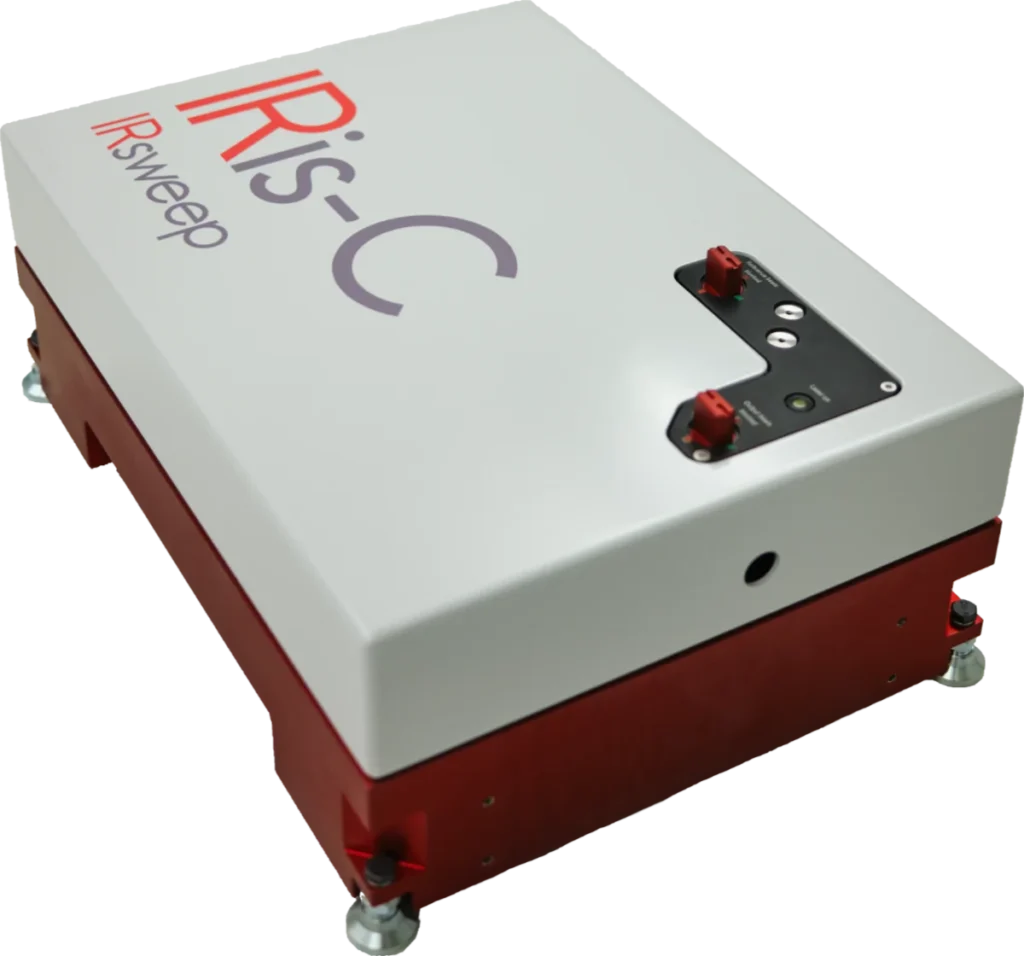Raphael Horvath1, Florian Eigenmann1 and Adrian Daly2
1) IRsweep AG, Laubisrütistr. 44, 8712 Stäfa, Switzerland
2) Pfizer, Global Technology and Engineering, Ringaskiddy, Cork, Ireland
Fiber optics, coupled to an ATR probe are often used in combination with infrared spectroscopy for industrial reaction monitoring purposes. While fibers in the visible and near-IR spectral regions can have a length of many tens or even hundreds of meters, mid-IR fiber technology is more limited. Even the leaders in mid-IR fibers typically provide only 2-4 m long fiber probes, as the attenuation at longer distances is simply too great for them to be used with commercial FTIR spectrometers.
A solution to this limitation is to increase the power of the spectroscopic light source.
IRsweep’s IRis-F1 is based around quantum cascade laser frequency combs. You can learn more about this technology here. The most important feature of the IRis-F1, as far as this application note is concerned, is that its lasers can provide a very high power output.
As part of a collaboration with Pfizer and art photonics, we have investigated the possibility of using very long mid-IR fibers in a spectroscopic setup. To the best of our knowledge, these are the world’s longest mid-IR fibers ever used for spectroscopy. The purpose of this measurement is to identify the limits of detection for such a measurement in comparison to more traditional techniques.
Also watch our short video on these measurements, which shows a live measurement through this “record breaking” fiber.
Experimental setup
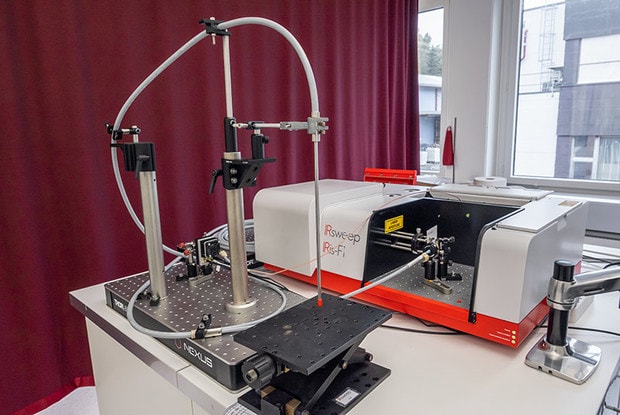 Figure 1: IRis-F1 with coiled up 10 m ATR fiber probe.
Figure 1: IRis-F1 with coiled up 10 m ATR fiber probe.
The spectrometer used is an IRis-F1 dual comb mid-IR spectrometer from IRsweep, here with a laser spanning the 1200 – 1290 cm-1 spectral range. The fiber is a custom-made 10m unit from art photonics (Berlin, Germany) with a two-bounce diamond ATR probe. From input in the spectrometer to output at the detector, the light traveled through 20 m of fiber.
Input coupling was achieved by focusing on the fiber end using a 75 mm ZnSe lens, and output coupling was done with an off-axis parabolic mirror. Here an external detector was used for ease of alignment, but the internal detector of the IRis-F1 would be equally suitable for these measurements.
The fiber was held in the position shown and the samples were exchanged on the lab jack as shown in Figure 1.
Because of space constraints the bulk of the fiber was coiled up for these measurement, but the video also shows a measurement extended on the fully extended fiber.
A test matrix which is representative of reaction monitoring and also relevant to process analytics is mixtures of acetone in toluene. We measured several concentrations to determine the limit of quantification. Each measurement consisted of 15 samples, corresponding to an acquisition time of approximately 250 ms and a processing time of <1 minute.
Results
The spectra of a range of concentrations of acetone in toluene are shown in Figure 2. A clear band is seen at 1215 cm-1, corresponding to the asymmetric C-C stretch of acetone. Gaussian wavenumber averaging has been performed, resulting in a full-width at half maximum spectral resolution of 3.5 cm-1. A linear baseline correction was done with two points on either side of the analyte peak to isolate the feature of interest.
It is evident that this acetone band is visible until a concentration of approximately 0.1%. This is similar to FTIR measurements, but at a far greater distance. At lower concentrations, we can see baseline fluctuations at similar intensities to the acetone band. We can do a simple linear regression analysis to quantify where the limit of detection lies.
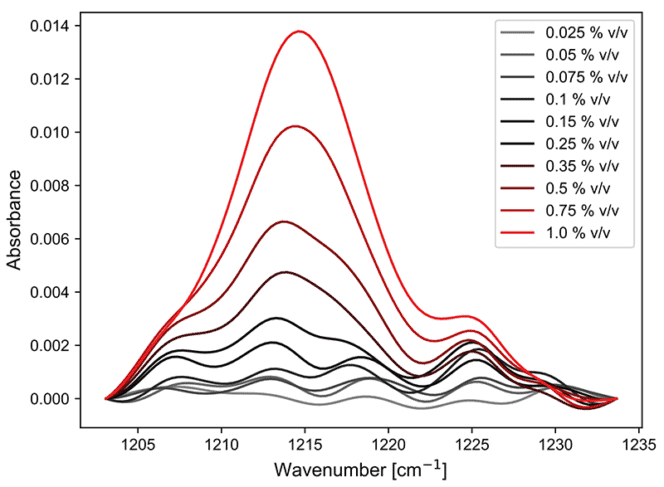 Figure 2: Concentration series of acetone in toluene after linear baseline correction.
Figure 2: Concentration series of acetone in toluene after linear baseline correction.
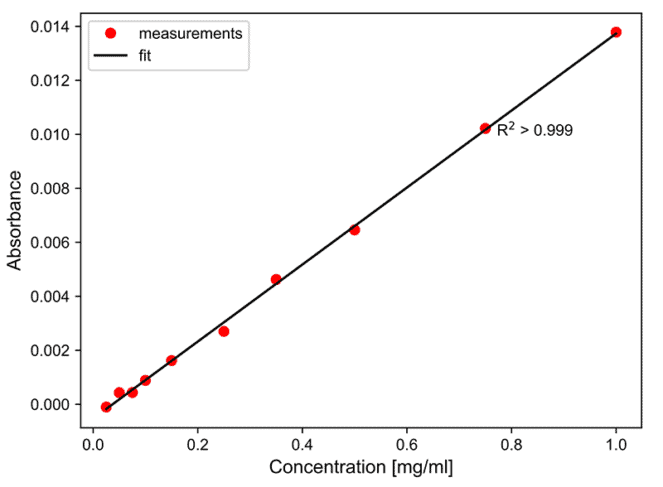
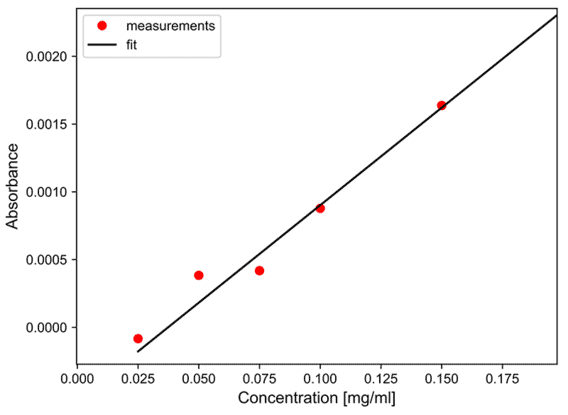
Figure 3 Left panel: Single point linear regression of full concentration range. Right panel: Zoom into low concentrations.
Conclusions and outlook
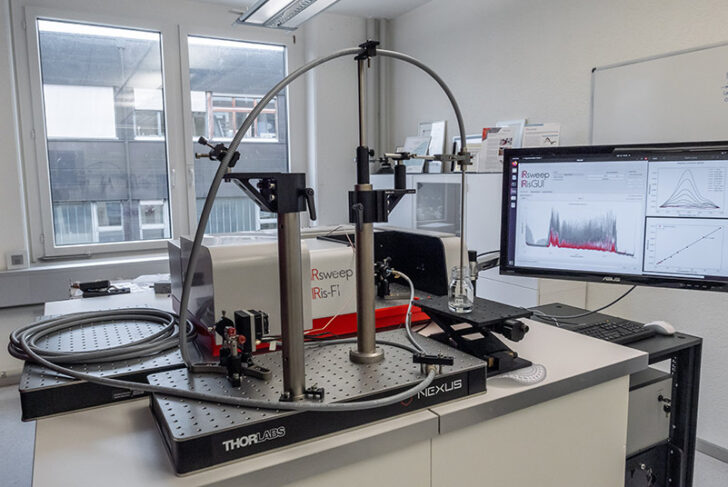 Figure 4: IRsweep IRis-F1 with coupled 10 meter fiber ATR probe.
Figure 4: IRsweep IRis-F1 with coupled 10 meter fiber ATR probe.
his application note showcases spectroscopic measurements through a 10 m mid-IR fiber probe designed and built by art photonics. We report good sensitivity of our test system, which is acetone in toluene. The performance is in line with existing FTIR methods but the length of the fiber used is unprecedented.
Although an internal detector could be used, for the measurements shown here we used an external detector for ease of alignment. If an external detector is application-compatible, a future version of the fiber could be used to make the light-return unnecessary by simply moving the detector assembly close to the probe. To operate, it would need a low-voltage DC power supply and a signal cable back to the spectrometer. Using this approach, even longer fibers – up to 20 m – would be feasible without changes to the IRis-F1.

